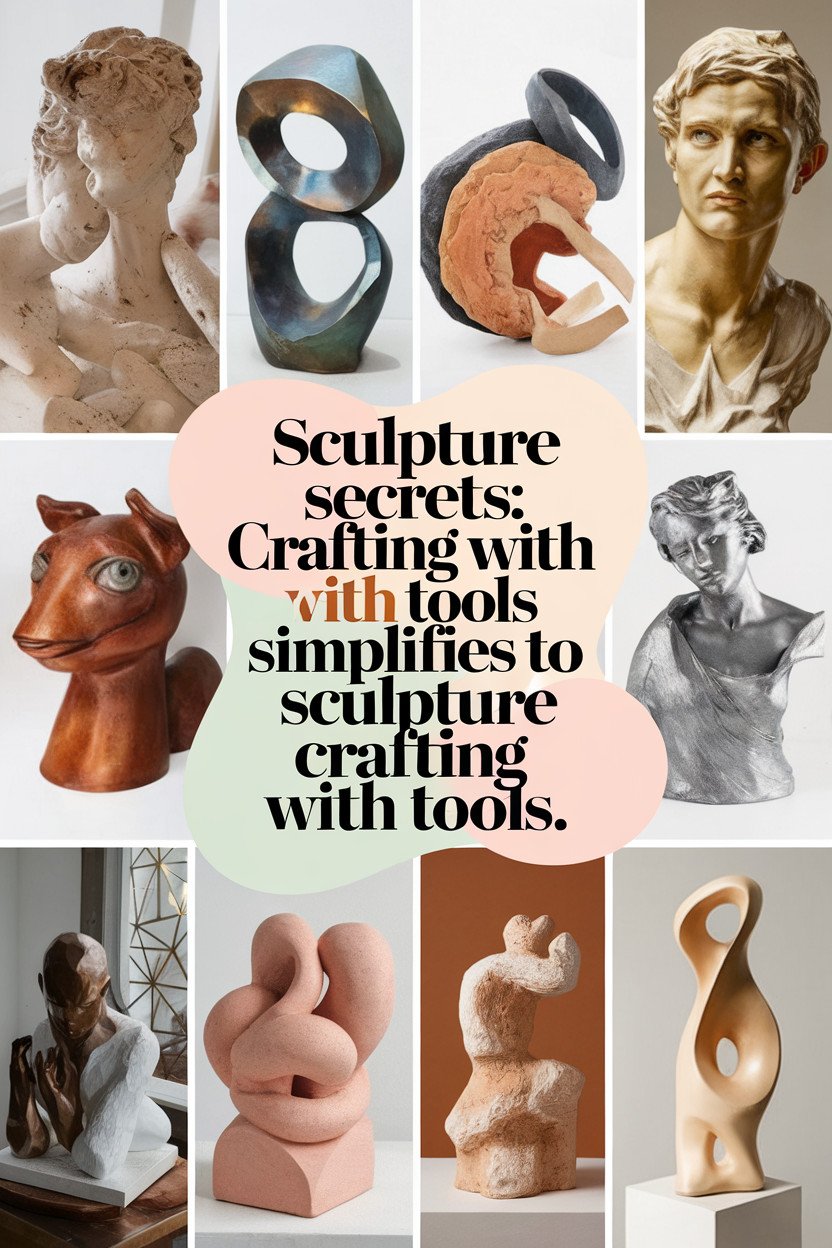Creating a stunning sculpture requires not just skill and talent but also the right tools.
From essential tools every sculptor should have to advanced techniques to troubleshoot common challenges, we’ll cover everything you need to know about crafting sculptures with the perfect tools. So get ready to unleash your creativity and take your sculptures to the next level.
- Choosing the right tools is crucial for creating stunning sculptures.
- Whether you’re a beginner or an experienced artist, this guide will provide recommendations for the best sculpture tools.
- We’ll cover essential tools, different sculpting techniques, and troubleshooting common challenges.
- Don’t forget to maintain and care for your tools to ensure their longevity.
- Connect with other sculptors and access valuable resources in the sculpture community.
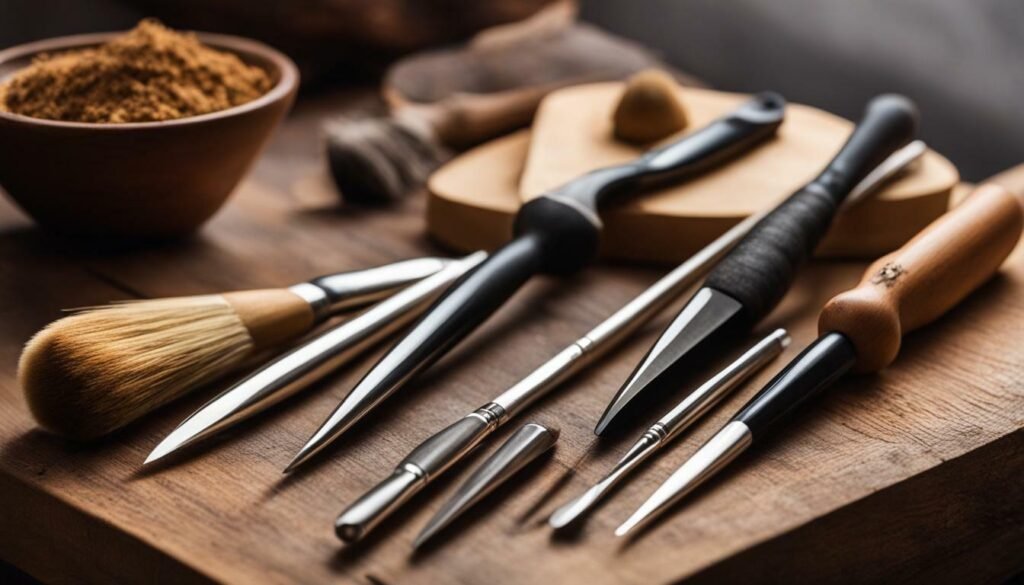
Getting Started with Sculpting
If you’re new to the world of sculpting, don’t worry! Starting out can be daunting, but with the right tools and some tips, you’ll soon be creating beautiful sculptures. Here are some beginner sculpting tips to help you get started:
- Invest in a Sculpture Tool Set: A comprehensive sculpture tool set is essential for any beginner. Look for a set with a variety of tools, including chisels, knives, and shaping tools.
- Choose the Right Sculpting Medium: Different mediums work better with different techniques, so choose a medium that suits your desired outcome. For beginners, clay is a great medium to start with as it’s easy to manipulate.
- Start with Simple Projects: As a beginner, it’s best to start with simple projects to build your skills and confidence. Choose an easy-to-sculpt object, such as a fruit or animal, and practice until you’re comfortable moving onto more complex projects.
As a sculptor, having the right tools can make all the difference in achieving your creative vision. Here are some essential sculpting tools that every artist should have in their arsenal:
- Clay modeling tools: These tools are ideal for shaping and carving clay sculptures. They come in various shapes and sizes to accommodate different sculpting techniques.
- Wire tools: Wire tools are used to remove excess clay and fine-tune the details of your sculpture. They can also be used for creating armatures, which are essential for supporting larger sculptures.
- Chisels and carving tools: These tools are used for carving and shaping stone, wood, and other hard materials. They come in a range of shapes and sizes to accommodate different sculpting techniques and materials.
- Sculpting knives: These knives are perfect for cutting and slicing through various materials, including clay, foam, and wax. They can be used for shaping and carving intricate details in your sculpture.
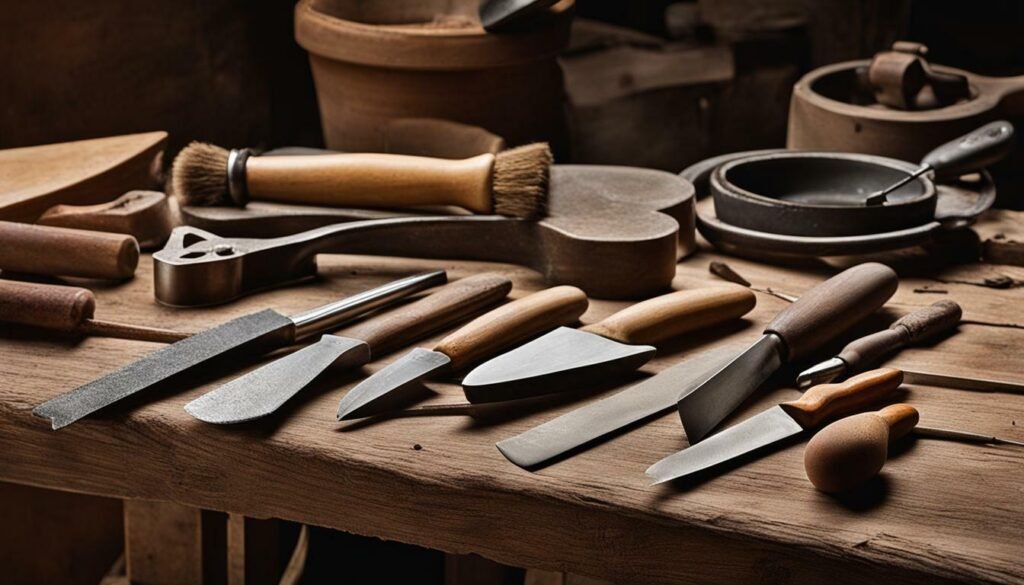
Understanding Different Sculpting Techniques
There are various sculpting techniques available for artists to experiment with. Here are a few:
- Carving: Removing material from a block to create shapes and forms.
- Molding: Adding material to a form to create different shapes and textures.
- Modeling: Manipulating soft material, such as clay, to build and shape forms.
- Assembling: Joining together various elements to create a finished sculpture.
Choosing the right sculpture medium is crucial to achieving your desired results. Here are some things to consider when selecting your medium:
- What is your desired finished product?
- What level of detail do you want to achieve?
- How much experience do you have with the medium?
- What level of permanence do you need?
Common sculpture mediums include:
| Medium | Description |
|---|---|
| Clay | Easy to work with, great for beginners, but not permanent unless fired |
| Stone | Difficult to work with, but creates permanent and highly detailed sculptures |
| Wood | Malleable and versatile, great for creating both realistic and abstract sculptures |
| Metal | Creates durable, long-lasting sculptures but requires specialized tools and knowledge |
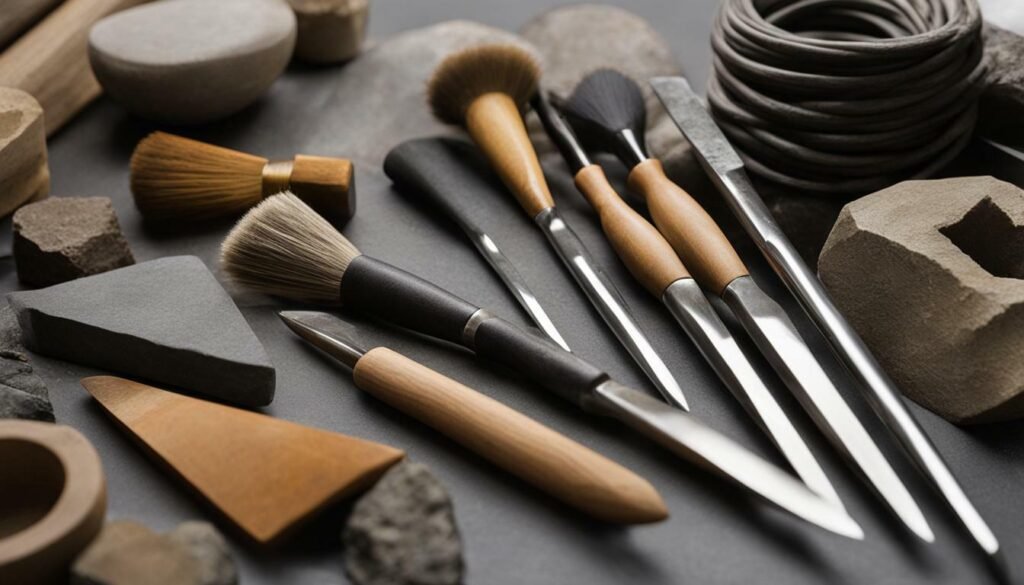
Sculpting Tools Maintenance and Care
- Clean your tools after every use with warm water and mild soap. Use a soft-bristled brush to remove any debris or residue.
- Dry your tools thoroughly after cleaning. Avoid leaving them in damp environments, as this can lead to rust and damage.
- Store your tools in a cool, dry place to prevent exposure to moisture and humidity. Consider using a tool roll or a toolbox to keep them organized and protected.
- Sharpen your tools regularly to maintain their cutting edges. Use a sharpening stone or a honing guide for best results.
- Lubricate your tools with a light coat of oil to prevent rust and promote smooth operation.
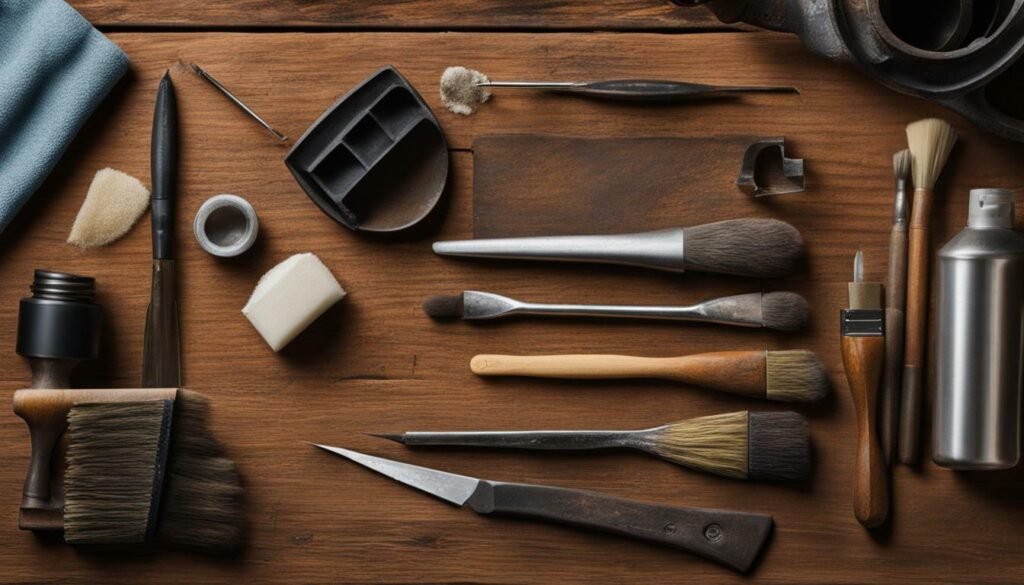
Congratulations, you’re now an experienced sculptor! It’s time to take your skills to the next level with advanced sculpting techniques.
Here are some techniques you can explore:
- Armature building: Create a solid interior framework for your sculpture using wire, wood, or other materials.
- Texture creation: Experiment with different tools and techniques to create unique textures, such as layering, scoring, and impressing.
- Hollowing out: Learn how to create hollow sculptures by using molds, or by building an interior structure with removable parts.
- Adding color: Incorporate color into your sculptures by using paints, pigments, or dyes.
- Integrating mixed media: Combine different materials, such as wood, metal, or glass, into your sculptures to create interesting contrasts and textures.
Sculpture Tools for Specific Projects
Depending on the project you’re working on, certain tools may be more effective than others. Here are some recommended sculpture tools for specific types of projects:
- If you’re sculpting a portrait, consider using a set of precision carving tools, such as chisels and knives, to ensure lifelike details.
- For larger sculptures, a heavy-duty wire cutter may be necessary to cut through thick materials like armature wire or foam.
- If you’re working with softer materials, like clay or wax, a set of sculpting loops or wire-end tools can help create smooth, curved lines and textures.
- When creating sculptures with intricate detail, a set of dental tools can be useful for precise and delicate work.

Troubleshooting Common Sculpting Challenges
Sculpting can be a challenging art form, and it’s normal to encounter difficulties along the way. Here are some common challenges you may face and recommendations on how to overcome them:
- Difficulty with tool control: If you’re struggling with controlling your sculpting tools, consider practicing on a flat surface or using softer materials until you get a better handle on the tools.
- Cracks in your sculpture: Cracking can happen due to the drying process, especially with clay. To avoid this, make sure your sculpture remains moist and covered while not in use.
- Uneven texture: If your sculpture has an uneven texture, try using sandpaper or a toothbrush to smooth out the surface.
- Unclear details: If you’re struggling to achieve clear details in your sculpture, try adding more contrast between the highlights and shadows.
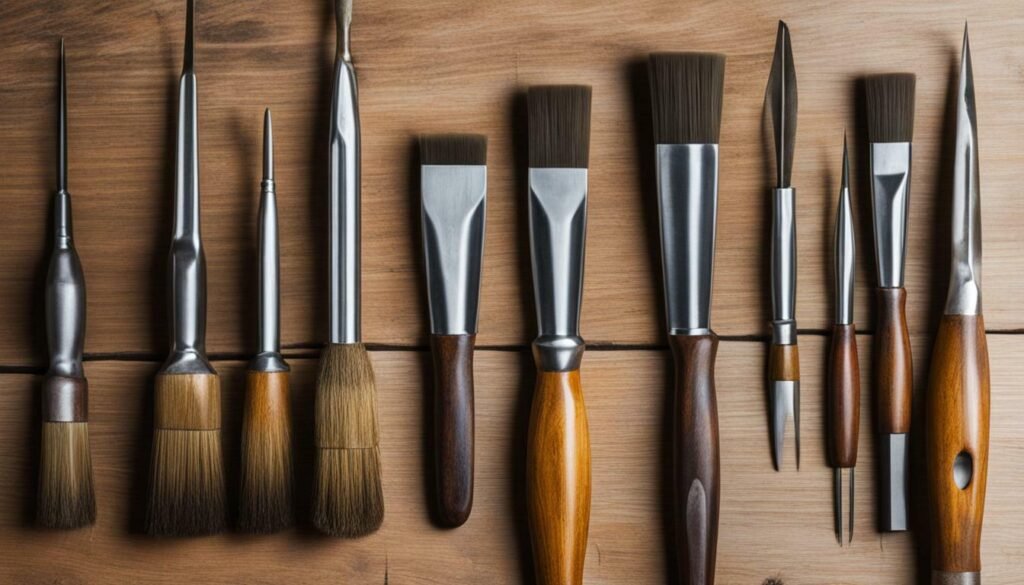
Sculpting requires the use of sharp tools that can cause injury if not handled with care. To ensure your safety while sculpting, follow these essential safety precautions:
- Always wear protective gear, such as gloves and safety glasses, to protect your hands and eyes from flying debris.
- Keep your work area clean and organized to prevent accidents and injuries.
- Use tools only for their intended purpose and handle them with care.
- Keep your hands and fingers away from the path of the tool to prevent accidental cuts or punctures.
- Take frequent breaks to avoid fatigue and maintain focus.
- Never leave your tools unattended when not in use.
After hours, days, or maybe even weeks of hard work, it’s time to showcase your sculpture. Whether it’s for personal satisfaction or public display, there are a few things you can do to present your masterpiece in the best way possible. Here are some tips to help you:
- Keep your sculpture clean and dust-free. Use a soft-bristle brush or a microfiber cloth to gently remove any particles.
- Choose an appropriate display location with good lighting that enhances the sculpture’s overall effect.
- Consider using a pedestal or stand to elevate your sculpture and draw attention to it.
- If you’re planning to sell your sculpture, capture clear and detailed images of it for promotional purposes. Use a white or neutral background to keep the focus on your sculpture.
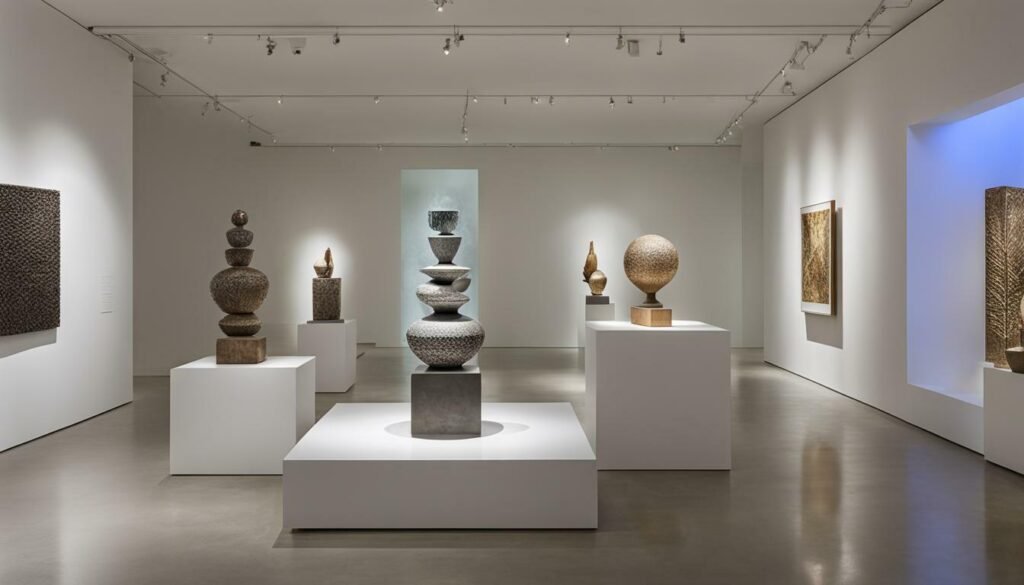
As a sculptor, you know that inspiration can come from anywhere. Whether it’s a natural landscape, a piece of music, or an emotion, there are endless sources of inspiration waiting for you to explore.
- Take a walk in nature- observe the shapes and textures of the environment
- Study the work of other sculptors – see how they interpret their chosen medium
- Embrace new experiences- travel, attend concerts or exhibitions to gain fresh perspective
- Try new sculpting techniques- challenge yourself to push past your comfort zone
Connecting with other sculptors and accessing valuable resources can greatly enhance your sculpting experience. Here are some recommended sculpture communities and resources:
- Sculpture Tools Guide: Our comprehensive guide on sculpture tools provides detailed information on the best tools for sculpting success.
- Sculpture Supplies Guide: Our guide on sculpture supplies covers everything from different sculpture mediums to safety equipment.
- Sculpture Forums: Online forums such as Sculpture.net and Artmetal.com offer a platform for sculptors to connect, share their work, and ask for advice.
- Sculpture Workshops: Attending sculpture workshops can provide hands-on experience, expert guidance, and networking opportunities. Check your local art centers or colleges for upcoming workshops.
- Online Sculpture Classes: Online classes such as those offered by Udemy and Skillshare provide affordable, flexible, and convenient access to expert-led sculpting courses.
FAQs
What is this guide about?
This guide is all about sculpting and the tools you need to create stunning sculptures. Whether you’re a beginner or an experienced artist, we provide recommendations and tips for sculpting success.
